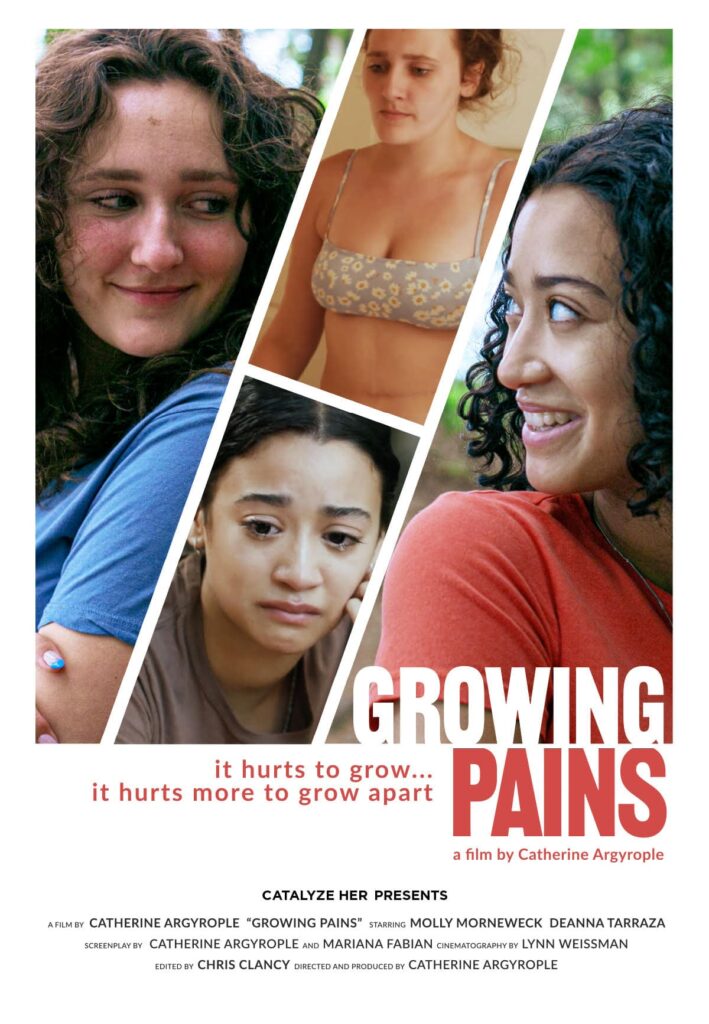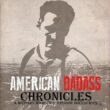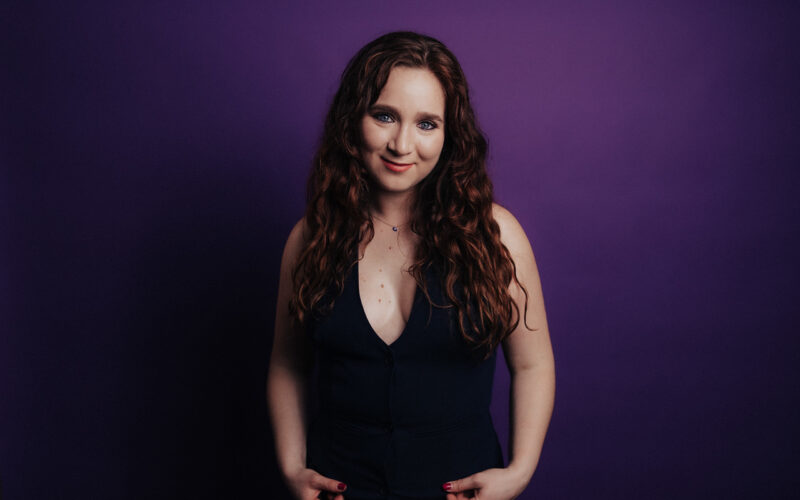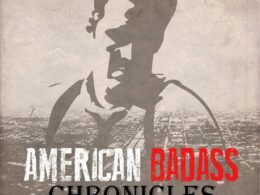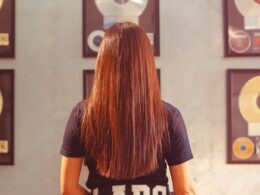“Growing Pains” just arrived on Tubi after a successful festival run. How does it feel to see this very personal story reach a wider audience, and what does this new chapter mean to you?
It is a total dream come true— Tubi was my goal for the film all along so it’s full circle that Tubi partnered with us for the launch of Growing Pains. It’s surreal to have gone from the four year process of writing this movie while I was graduating college to distributing internationally to millions of viewers! I feel incredibly proud and grateful for the people who believed in myself & the film, on the team and in our communities!
It’s a strange feeling to take a very personal piece of art and bring it out into the world.
For our world premiere back at home in Boston, it felt very raw and vulnerable for me
after I watched my film in an audience of 400 people. It took some time to process and
heal what came up for me after the festival circuit as a Stage 3 childhood cancer
survivor, and I definitely felt that again leading up to the release. When you have cancer
as a child, that’s how your body and nervous system becomes accustom to life and how
it’s regulated. I’ve had to work a lot to process and grieve, but I believe healing through
art is the most powerful way you can heal!
The film explores the emotional aftermath of surviving cancer, a theme rarely depicted on screen. How did you approach balancing such a deeply personal story with universal coming-of-age emotions?
As a childhood cancer survivor, it felt rare to see stories of life after cancer. All of the stories about cancer are people suffering through treatment or losing someone to cancer, it’s rarely about life following a traumatic illness and how it shapes your identity, worldview, body image and mental health, as well as your family. Cancer is a worldwide crisis that everyone is touched by, and I knew my story as a survivor would resonate with millions who felt that their stories are never seen on screen. I was also a student athlete that struggled with my mental health & body image in my teen years, which felt like a huge problem amongst my peers growing up— especially the rowers! I wanted to shine a light on the unhealthy ways that society pressures kids to fit into rigid boxes and how harmful it can be for their mental & physical health. For myself as a survivor, I had a complicated relationship with my body and health in general, so it just escalated the things I was feeling.
I’ve always been an advocate, so it’s only natural for me to be advocating for mental health in my films and shine a light on topics that are rarely seen in an authentic, nuanced light. When it comes to the universal themes of friendship breakups, discovering your identity and your sexuality, those were all things I was grappling with deeply in my early to mid twenties as I was developing this movie. Coming-of-age is timeless, it seems we are always coming of age and into ourselves in new ways as we grow. Mari, my writing partner, and I felt that while these were pivotal themes for us as teens, they could be relatable universally beyond the young adult years.
One of the most striking aspects of Growing Pains is its authenticity — both emotional and visual. How did you work with your cast, especially Molly Morneweck and Deanna Tarraza, to create such raw, believable performances?
Thank you, I appreciate that! I worked with phenomenal young actors— Deanna and Molly brought so much energy and emotion to their performances. We often chatted about how they felt like their character’s Nat and Zoe in their friendship dynamics and how the actors had felt similar feelings when drifting apart from friends in the past. It all felt like divine timing in a way, because those feelings were still fresh for the actors to process and play on through their performances, as well as serve as a catalyst for their own healing!
When we were casting, I knew immediately that both Deanna and Molly were meant to play the leads. When I saw them take my words from the script to their self tapes, I was really moved at how they already seemed to embody the characters. Both actors convey so much emotion in their expressions and faces, without dialogue, which added to the film’s quiet emotional power that seems to radiate as an undertone of their drifting friendship. I knew that I was discovering two young actors who have incredibly bright futures, and I truly feel honored that Deanna and Molly believed in me and the film as much as I did in them!
Connecting with Molly was unique as a survivor because she shared a scar from a surgery that was identical to mine and her character Zoe’s scar. Zoe’s scar is an important part of her character’s story and relationship with her body, so to authentically cast a real teen rower and not have to use special effects makeup for her scar was just the most incredible alignment. I’m all about authentic representation, especially when it comes to disability representation, so that was a very special experience for me as a filmmaker.
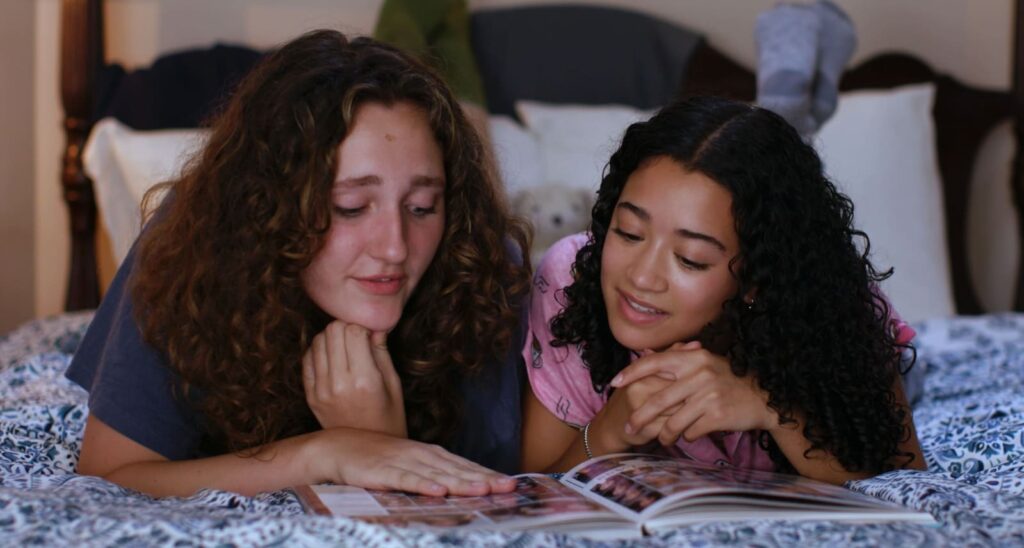
You’ve described the film as a “love letter to young women who’ve struggled to see their stories represented.” Was there a specific moment in your life or career when you realized you needed to tell this story yourself?
Honestly, it was when I was watching a tv show about teen girls that was created by a man! It was pretty disturbing to see how sexualized, sensationalized and overdramatized the teen girl experience was on screen— from someone who could never actually understand what it is like to grow up in our shoes. It was so clear to me that our stories are being misrepresented on a wide scale in media and that is having a harmful ripple effect on the young adults who are watching these shows, thinking that life should look a certain way like it does in these shows and movies.
In comparison, I felt deep inspiration when I watched The Wilds, a Prime show created by Sarah Streicher that showcases some of the most authentic and diverse representation of young women that I’ve ever seen on screen. It inspired me to want to tell a story of two friends with completely unique lives and backgrounds, growing up in the same town and having their friendship drifts apart at one of the most challenging points of their lives. I was grateful to write with Mari, because we each brought a lot of ourselves and truth to these characters to showcase two diverse perspectives.
The film’s friendship dynamic between Zoe and Nat feels just as intense as a romantic relationship. Why do you think the loss of a best friend isn’t explored more often in cinema, and how did you want to portray that heartbreak?
I felt the same way in terms— for women, our friendships are so deep and emotionally connected that friend breakups are deeply difficult universal experiences. It could be because women are so rarely given the opportunities and platforms to tell our own stories that there’s not as much of a light on this relationship dynamic versus a romantic breakup. I wanted to comment on how female friendships are deeply important, especially to teens still figuring themselves out— they may not feel safe confiding to their family in the same way that they would confide in their best friends!
When writing Growing Pains, I was drifting apart from my college best friends who I honestly thought would be in my life forever. As we were growing in different directions, there was a strange unspoken tension and strain on the relationship that I begun to sense was just a huge elephant in the room. I feel like a lot of times in relationships, small things grow into a big thing over time if they aren’t dealt with and ultimately can lead to a breaking point. That was the intention when showcasing how Zoe and Nat’s relationship changes over the course of the film, and how life can pull you separate ways sometimes.

Growing Pains features a predominantly female and non-binary crew, from writing to cinematography. In what ways did that influence the tone and energy on set — and do you think audiences can feel that difference on screen?
It was always my intention to tell a female centered story, made by a team of women.
Now, it’s my mission as a filmmaker with my production company CATALYZE HER, because I believe this is so deeply needed in our industry and on screen. I think the difference that it makes on screen is how we portray young women versus how a predominantly male team would portray young women— it’s all about the female gaze and having sensitivity to our emotions, bodies, and stories. When it comes to Growing Pains, this is a personal, sensitive and emotional film that often left our characters feeling exposed and raw. I knew it was important to have a sensitive and empathetic approach when it came to filming some of these difficult scenes, so that was a clear tone I set from the beginning in pre-production with my team. We worked with a team of predominantly teen actors, and I wanted to make sure they felt safe and supported on set. I was grateful to work with kind and talented filmmakers like my Associate Producers Lia-Lucine Cary and Michelle Carr, who helped create this environment alongside me!
The film received the ReFrame Stamp from the Sundance Institute and Women In Film, recognizing gender-balanced hiring. How important was it for you to not only tell a feminist story but also build one behind the camera?
I wasn’t going to make this movie without a team of women, truly. Because I was moved to tell an authentic female centered story from a feminist point of view, I believe it was the only way I could authentically create this film! ReFrame is an incredible organization that awards the top filmmakers like Greta Gerwig, Emerald Fennell, and Gina Prince-Bythewood for their work in gender equity in film, so to be among those filmmakers is a dream come true. Making Growing Pains fueled a passion in me that I am meant to continue creating and shaping female centered stories with diverse teams of women, so I can be a part of the change I wish to see in the industry and on screen!
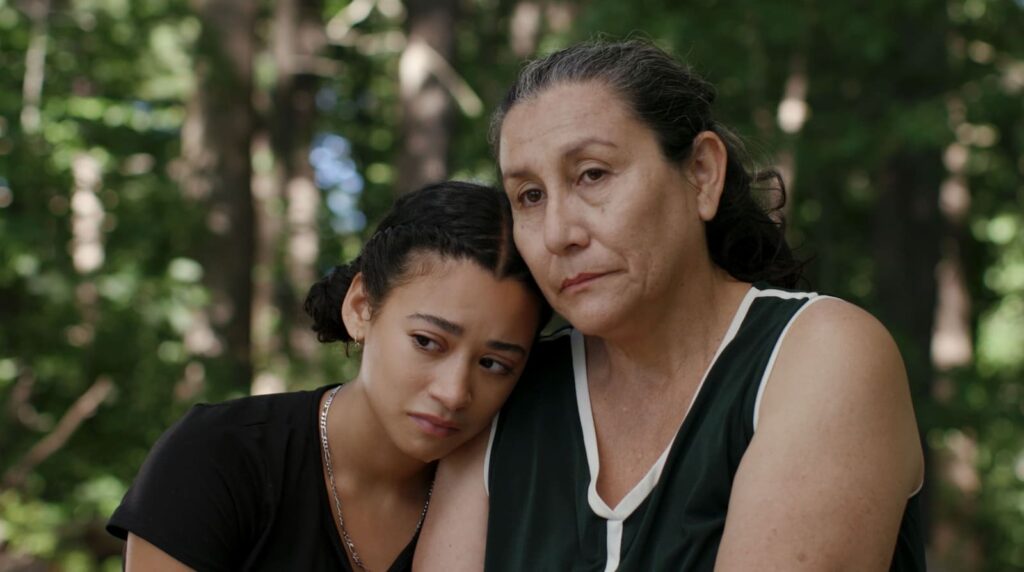
You’ve mentioned being inspired by films like Lady Bird, Eighth Grade, and Boyhood. What visual or emotional references guided you and DP Lynn Weissman when shaping the film’s intimate aesthetic?
It felt like all of the films that were references to Growing Pains were these mumblecore, coming-of-age dramas that were emotionally driven versus physically. I loved using ShotDeck to come up with stylistic references for the film! I wanted to shoot on anamorphic lenses but as a micro-budget indie, it wasn’t in the cards for Growing Pains. Lynn and I talked a lot about giving both Zoe & Nat unique color palettes on screen— blue/green undertones for Zoe and her moodiness, and fiery reds and oranges for Nat’s passion and anger. We often went to medium/close shots instead of wide to convey more emotion.
There’s a subtle mumblecore realism in Growing Pains — the dialogue, the pacing, the vulnerability. Was that a deliberate stylistic choice, and what do you feel that approach adds to the storytelling?
Yes, exactly! I don’t think I realized it until after I had written the script, but all of my references were slow burn mumblecore films. Growing Pains is extremely character driven in a unique dual, protagonist format to mimic a more television narrative. I knew that I could only write a film I could feasibly make, and honestly, this was an ambitious film to make within our budget range! We filmed multiple party scenes and on the water with the rowing, so it was quite challenging to pull off at the capacity we had but I’m so glad we went for it because I think it adds to the story feeling more real.
In terms of the vulnerability and dialogue, I think that’s a testament to how much Mari and I brought of ourselves and the teen girl experience into the writing. I spent a lot of time interviewing my friends and younger cousins, asking them about what girlhood and the teen years were like for them. Through that process, we touched on a lot of “core” teen girl experiences that so many of us go through and layered those truths into the script.
The film touches on Latinx identity and queer representation through Nat’s character. How did you and co-writer Mariana Fabian collaborate to ensure those experiences were portrayed with truth and sensitivity?
It was really important to Mari and I to have authentic representation with this film. Mari often shared how rare Latinx representation was on screen, and even more rare to see a queer Hispanic character. To have a queer Hispanic protagonist was representation that Mari herself needed growing up, to feel safe and seen in her own identity. I understood what it was like to be grappling with my sexuality and have it not fit in with what your friends and family envision for your life, but my experience differs greatly from Mari’s.
We often chatted about how lesbian representation in film is often the butt of a joke or from supporting characters, so we wanted to showcase what it looked like to have a healthy queer relationship on screen and eventually find acceptance in that.

You shot Growing Pains in Massachusetts, your home state. How did returning to familiar places shape your storytelling — and what was the most emotional day on set for you personally?
It was honestly so special to film my debut feature at home amongst my own community. Nat’s family restaurant was filmed at Express Gourmet, a restaurant I used to work at when I was in high school! We filmed at my family’s house, my friend and Associate Producer Bianca Vranceanu’s house, as well as my Alma matter Northeastern University. There were many friends and familiar faces on set, as well as community members supporting and cheering us on the whole time.
This is a spoiler but the most emotional day for me on set was when Zoe’s mom finds her diet pills. While this was a fictional event, I did turn to weight loss pills at the height
of my eating disorder as a kid. Part of my journey healing and writing this film was envisioning how my mom would have reacted if she had known what I was doing to my body, and how far my eating disorder had gone. On set, I just felt really raw and emotionally exposed. Deb LeClair, the lovely actor who plays Zoe’s mom Elena, gave me a hug when I was tearing up and that gave me strength to direct from a place of openness and courage.
Now that Growing Pains is available to stream, what do you hope young viewers — especially young women — take away from it? And what’s next for you as a filmmaker after sharing something so personal?
I always want people to take away the message that you never know what someone else is going through, so be kind! For me, I’m continuing my journey as a writer/director telling female-centered stories from my production company, CATALYZE HER. I’m in development on my second feature, The Ocean Calls Me, a coming-of-age surfing drama about a female surfer that has to save her family by winning an all male surfing competition after her father dies by suicide. It’s another personal movie about mental health and sports but one that has the inspiring, underdog feelings of Karate Kid combined with Soul Surfer. I’m so excited to continue to grow as a filmmaker and make art that resonates with people, and hopefully helps them feel seen. Thank you for taking the time to chat! You asked lovely questions.
